25 Dangerous Foods Your Dog Should Never Eat
Pet Luvz on February 5, 2025
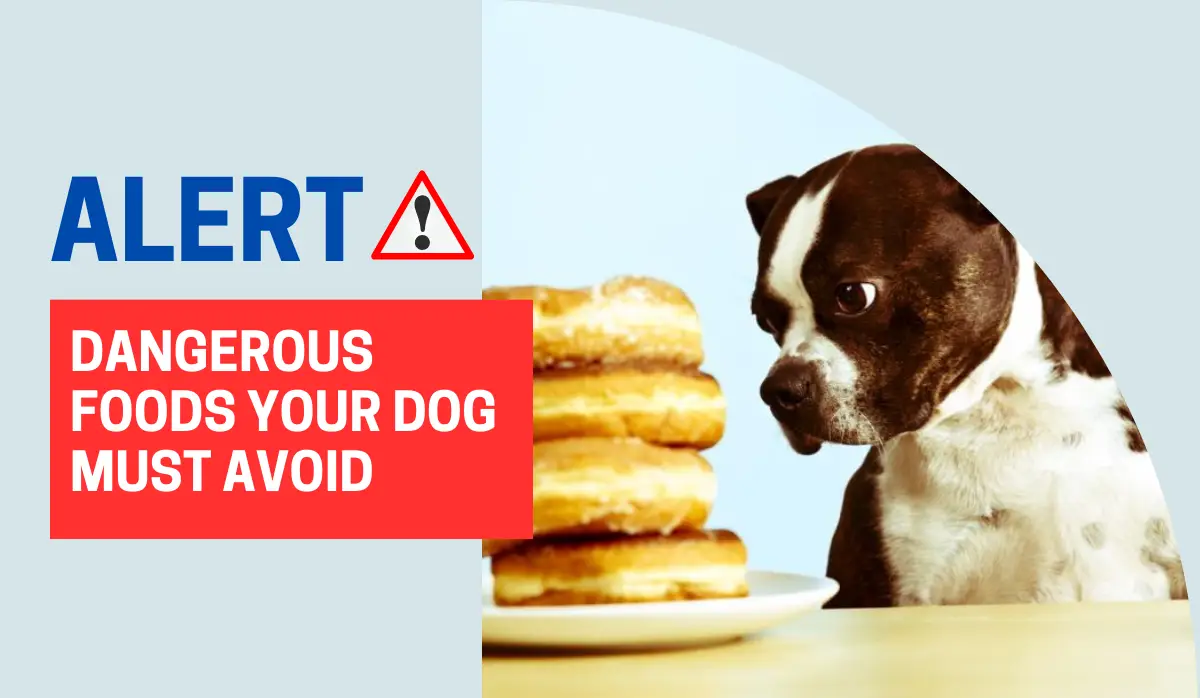
Table of Contents:
- Introduction
- Chocolate: An Absolute No-No
- Onions & Garlic: Hidden Dangers
- Caffeinated Products: A Risky Stimulant
- Grapes & Raisins: Small but Deadly
- Alcohol: Not for Canine Consumption
- Xylitol: The Sweet Killer
- Avocado: Persin Problems
- Cooked Bones: A Choking Hazard
- Dairy Products: Lactose Intolerance Issues
- Raw Fish & Meat: Potential for Disease
- Salt: Excess Can Be Harmful
- Citrus Fruits: Acidic Adversaries
- Nuts: High Fat and Harmful Varieties
- Raw Eggs: Salmonella Risks
- Yeast Dough: Gut Dangers
- Tomatoes: Solanine Sensitivity
- Apple Seeds: Cyanide Concerns
- Fatty Foods: Pancreatitis Triggers
- Corn on the Cob: Digestive Risk
- Human Snacks: Generally Unhealthy
- Peaches and Plums: Pit Perils
- Nutmeg: Neurotoxin Trouble
- Mustard Seeds: Toxic Components
- Rhubarb & Wild Mushrooms: Potentially Poisonous
- Conclusion
- CTA (Call to Action)
Introduction
When it comes to ensuring the health and happiness of your beloved canine, knowing what foods can dogs not eat is as crucial as providing a cozy bed or routine vet checkups. In this comprehensive guide, we’ll delve into the 25 dangerous foods your dog should never eat, highlighting why these foods are harmful and what safe alternatives you can consider.
Chocolate: An Absolute No-No
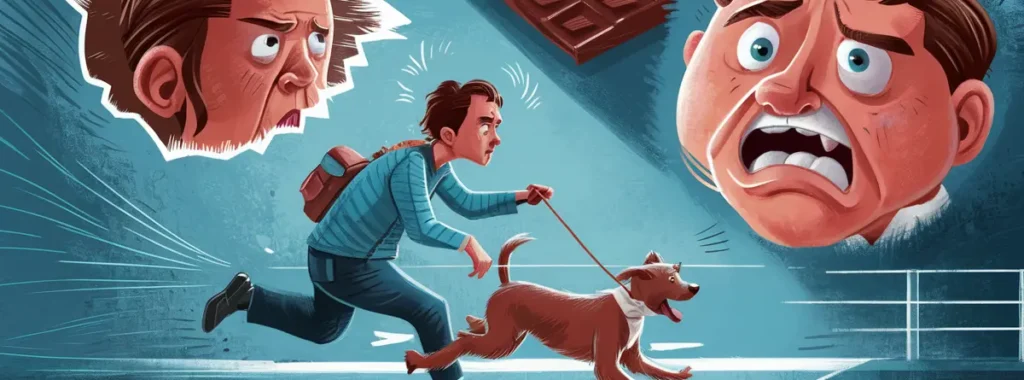
Chocolate is perhaps one of the most well-known dangerous foods for dogs. Theobromine, a compound found in all types of chocolate, is toxic to dogs because they metabolize it much slower than humans. Here’s a quick breakdown of why chocolate is harmful:
- Mild to Severe Toxicity: Depending on the type of chocolate, the level of theobromine varies. Dark chocolate and unsweetened baker’s chocolate contain higher levels than milk chocolate. Even small amounts can cause issues such as vomiting, diarrhea, rapid breathing, increased heart rate, and seizures.
- Immediate Actions: If you suspect your dog has ingested chocolate, contact your veterinarian or an emergency pet poison hotline immediately. Timely intervention is crucial.
Onions & Garlic: Hidden Dangers

Most pet owners are keenly aware that feeding dogs chocolate is a definite no-no, but did you know that everyday kitchen staples like onions and garlic are also hidden dangerous foods your dog should never consume? Understanding what foods can harm your pet is crucial for maintaining their health and happiness.
Why Onions and Garlic Are Harmful to Dogs
Both onions and garlic belong to the Allium family and are toxic to dogs due to substances called disulfides and thiosulfates, which can damage red blood cells and lead to anemia. This toxicity applies to all forms, whether raw, cooked, powdered, or dehydrated.
Symptoms of Allium Toxicity Include:
- Vomiting
- Diarrhea
- Weakness
- Lethargy
- Abdominally pain
- Rapid heart rate
If you suspect your dog has ingested onion or garlic, it is critical to consult your veterinarian immediately.
Caffeinated Products: A Risky Stimulant

When it comes to feeding our furry friends, knowing what’s safe and what’s not is crucial for their health and well-being. While many foods that humans consume are perfectly fine for dogs, some can be extremely harmful, and even fatal. In this blog, we’ll explore why caffeinated products and certain other foods pose a serious risk to your pet, and provide a “list of things dogs can eat” to keep them happy and healthy.
Why Caffeinated Products Are Dangerous for Dogs
Caffeine is a stimulant found in a variety of foods and drinks, including coffee, tea, soda, and energy drinks. While it may provide a welcome energy boost for humans, caffeine is highly toxic to dogs and can lead to rapid heart rate, seizures, and even death. Here’s what you need to know about caffeine and your canine:
- Symptoms of Caffeine Poisoning: Agitation, rapid breathing, heart palpitations, and muscle tremors.
- First Aid: If you suspect your dog has ingested caffeine, contact your vet immediately.
- Prevention: Always keep caffeinated products out of your dog’s reach and educate your family about the dangers.
Grapes & Raisins: Small but Deadly
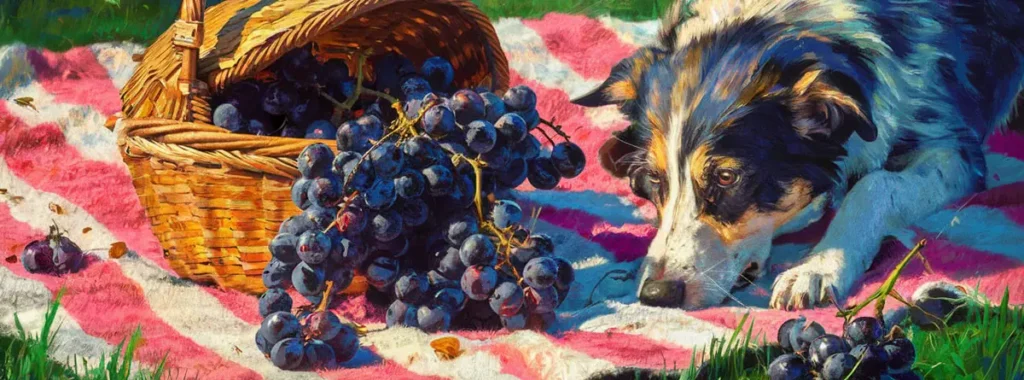
Despite their harmless appearance, grapes and raisins can lead to kidney failure in dogs. Symptoms include vomiting, lethargy, and depression.
Alcohol: Not for Canine Consumption
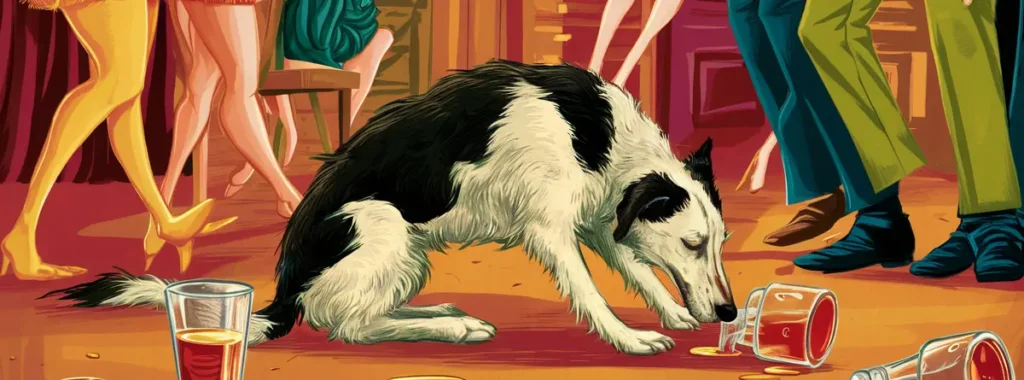
For many pet owners, dogs are not just pets; they are family members. The health and wellbeing of these furry friends are of utmost importance, which is why understanding what foods can harm them is critical. This guide specifically addresses “Dangerous Foods Your Dog Should Avoid: Alcohol and More”, and other common but hazardous food items.
Why Alcohol Is Harmful to Dogs
Alcohol is extremely dangerous for dogs and should never be given to them under any circumstances. The metabolism of dogs does not process alcohol the same way the human body does. Even small amounts can lead to alcohol poisoning, which can cause symptoms such as:
- Vomiting
- Diarrhea
- Poor coordination
- Difficulty breathing
- Lethargy
- Coma
- Death
It is crucial to ensure that alcohol is kept out of reach of dogs at all times, and to be vigilant during social gatherings where alcohol might be easily accessible.
Xylitol: The Sweet Killer

Found in sugar-free gum and candies, xylitol can cause liver failure and hypoglycemia in dogs. Symptoms may include vomiting, lethargy, and loss of coordination.
Avocado: Persin Problems
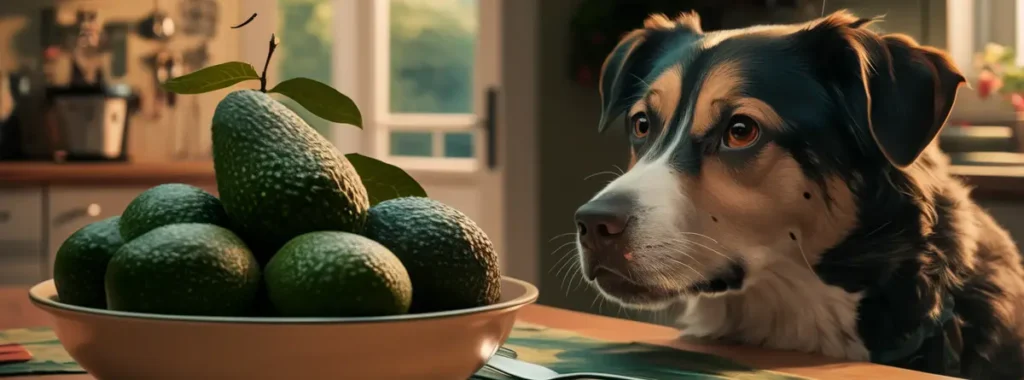
Avocados contain persin, which can cause diarrhea, vomiting, and heart congestion in dogs. The pit also poses a significant choking hazard.
Cooked Bones: A Choking Hazard

While it might seem natural to give your dog a bone, cooked bones can splinter and cause choking or severe damage to the gastrointestinal tract.
Dairy Products: Lactose Intolerance Issues
Many dogs are lactose intolerant. Dairy can cause gas, diarrhea, and vomiting.
Raw Fish & Meat: Potential for Disease
Raw fish and meat can harbor bacteria such as Salmonella and E. coli, as well as parasites, all of which are harmful to dog health.
Salt: Excess Can Be Harmful
High amounts of salt can lead to sodium ion poisoning in pets, which might cause symptoms like vomiting, diarrhea, tremors, and seizures.
Citrus Fruits: Acidic Adversaries
The acids in citrus fruits can cause stomach upsets in dogs, and the essential oils could affect their nervous system, leading to depression and fatigue.
Nuts: High Fat and Harmful Varieties

Certain nuts, including macadamia nuts, are toxic to dogs, causing weakness, overheating, and vomiting.
Nuts That Pose Risks to Canines
As a pet owner, it’s important to be aware of the specific nuts that pose a risk to your dog’s health:
– Macadamia Nuts
These are among the most toxic foods for dogs. Consumption can cause vomiting, ataxia, weakness, hyperthermia, and depression. They can be extremely harmful, even in small amounts.
– Walnuts
Walnuts, including black walnuts, are known to contain a toxin which can cause neurological symptoms in dogs. Moldy walnuts can also produce tremorgenic mycotoxins which increase the danger significantly.
– Almonds
While not as toxic as macadamia nuts or walnuts, almonds are still a risky choice for dogs. They are difficult to digest and can block the esophagus or even tear the windpipe if not chewed well.
Raw Eggs: Salmonelle Risks

Feeding raw eggs to dogs can expose them to Salmonella, resulting in gastrointestinal upset.
Yeast Dough: Gut Dangers
When it comes to feeding our furry friends, it’s crucial to know which foods are safe and which can pose serious health risks. Dangerous foods your dog yeast dough might seem like an odd combination, but it’s a critical topic every dog owner should be aware of. This blog will explore why yeast dough is dangerous for dogs, along with providing insightful tips on safer dietary options.
Tomatoes: Solanine Sensitivity
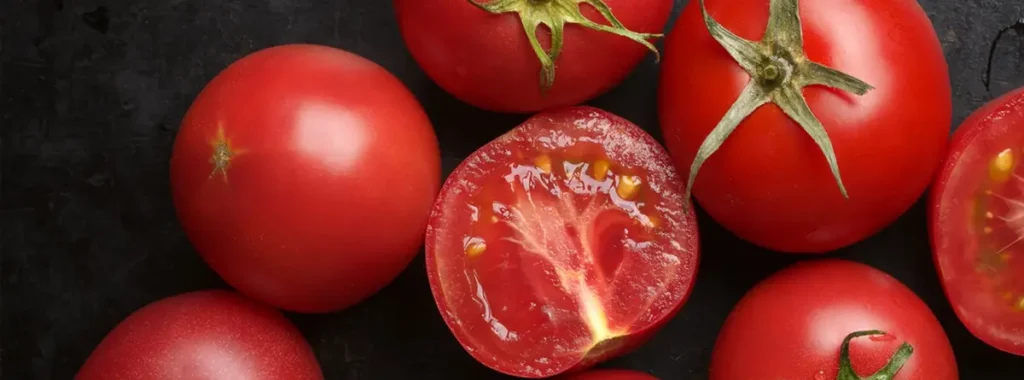
When it comes to feeding our furry friends, understanding what is safe and what could potentially harm them is crucial. Many dog owners are aware of common toxic foods like chocolate and grapes but may not know about less obvious dangers, such as tomatoes due to their solanine sensitivity.
The Risk of Tomatoes in Your Dog’s Diet
Tomatoes, while a nutritious fruit for humans, pose a risk to some dogs, primarily due to a compound called solanine, a natural defense mechanism of the nightshade family to which tomatoes belong. Solanine can be harmful in large quantities, and dogs sensitive to this compound may experience gastrointestinal upset or worse.
Understanding Solanine
Solanine is predominantly found in the green parts of tomatoes, such as the stems and leaves, and in unripe green tomatoes. Ripe red tomatoes have significantly lower levels of solanine, but caution is still advised for dogs with known sensitivities.
Identifying Solanine Sensitivity in Dogs
Symptoms of solanine poisoning in dogs include:
- Nausea
- Vomiting
- Diarrhea
- Lethargy
- Abdominal painIf you suspect your dog has eaten any part of a tomato plant, particularly the green parts, consult your veterinarian immediately.
Apple Seeds: Cyanide Concerns
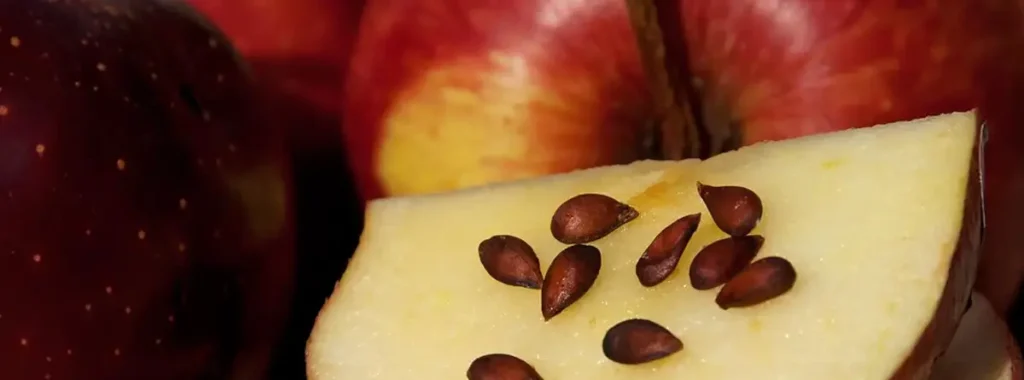
When it comes to feeding our furry friends, it’s crucial to be aware of what foods can pose a risk to their health. Among the various dangerous foods, apple seeds are a common, yet often overlooked hazard. This blog post explores the risks associated with apple seeds, as well as other harmful foods, and provides a list of safe alternatives to keep your pet healthy and happy.
Cyanide in Apple Seeds: What You Need to Know
Apple seeds contain a substance known as amygdalin, which can release cyanide when metabolized in the digestive system. While a small quantity might not cause harm, accumulated ingestion can be toxic or even fatal to dogs. Signs of cyanide poisoning include:
- Difficulty breathing
- Panting
- Shock
- Dilated pupils
To ensure safety, it’s best to remove apple seeds and core apples before sharing with your dog.
Fatty Foods: Pancreatitis Triggers
For pet owners, understanding what our canine friends can and cannot eat is crucial for their health and well-being. While it might be tempting to share your snacks with your furry companion, it’s essential to know that certain foods, especially fatty foods, can trigger pancreatitis, a serious health issue in dogs.
Corn on the Cob: Digestive Risk
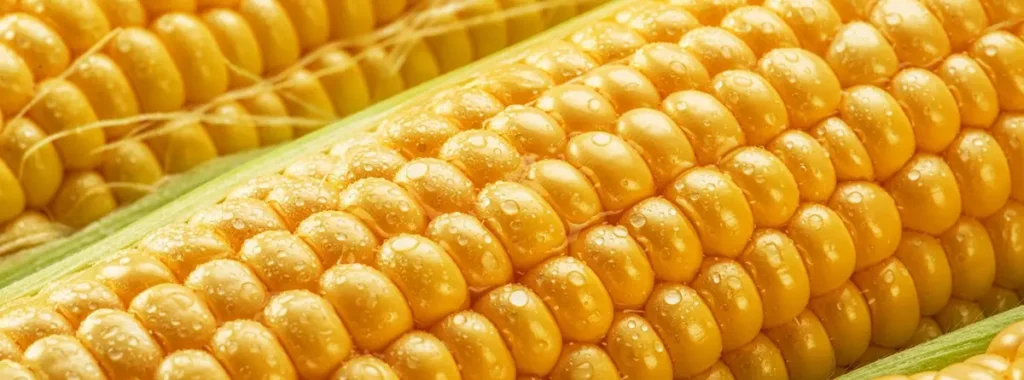
Corn on the cob is a popular summer staple, enjoyed at barbecues and family gatherings. But while we savor this buttery treat, it’s crucial to consider its safety for our four-legged friends. This post delves into the digestive risks associated with corn on the cob for dogs and provides guidance on safer dietary choices.
Human Snacks: Generally Unhealthy
As pet owners, we often consider our dogs as part of the family, which sometimes leads us to share our meals with them. However, what is tasty and harmless to us can be extremely dangerous for our canine friends. In this guide, we will explore what human snacks are generally unhealthy for dogs, highlighting safe foods for dogs and those that can pose serious health risks.
Peaches and Plums: Pit Perils
For many dog owners, sharing a snack of fresh fruits like peaches and plums with their furry friends is a common practice. However, these sweet treats hold hidden dangers, frequently overlooked. In this informative blog post, we explore the “Peaches and Plums: Pit Perils” which poses significant risks to our canine companions, and provide guidance on dog-safe foods.
Nutmeg: Neurotoxin Trouble
As pet owners, ensuring the health and happiness of our furry friends is always a top priority, which includes being vigilant about their diet. While most of us are aware of common toxic foods like chocolate and onions, there are lesser-known dangers lurking in common household spices—one of which is nutmeg. In this post, we’ll explore why “Dangerous Foods Your Dog: Nutmeg” ranks highly on the list of concerns and provide you with a list of things dogs can eat for safer alternatives.
Mustard Seeds: Toxic Components
Mustard seeds can be toxic to dogs, leading to gastrointestinal distress and potentially damaging the lining of the gut.
Rhubarb & Wild Mushrooms: Potentially Poisonous

Certain varieties of wild mushrooms can be fatal to dogs. Rhubarb leaves, similarly, contain oxalic acid, which can cause kidney failure.
Conclusion
Ensuring your dog avoids these 25 dangerous foods can help maintain their health and prevent emergency trips to the vet. Always consult with a veterinary professional before introducing new foods into your dog’s diet.
CTA (Call to Action)
Love your pet? Share this guide with other dog owners to spread the word about these dangerous foods! For more tips on safe and healthy foods for your pup, check out our comprehensive safe foods for dogs list.








 Facebook
Facebook instagram
instagram youtube
youtube




